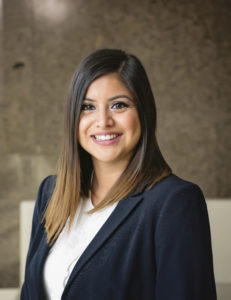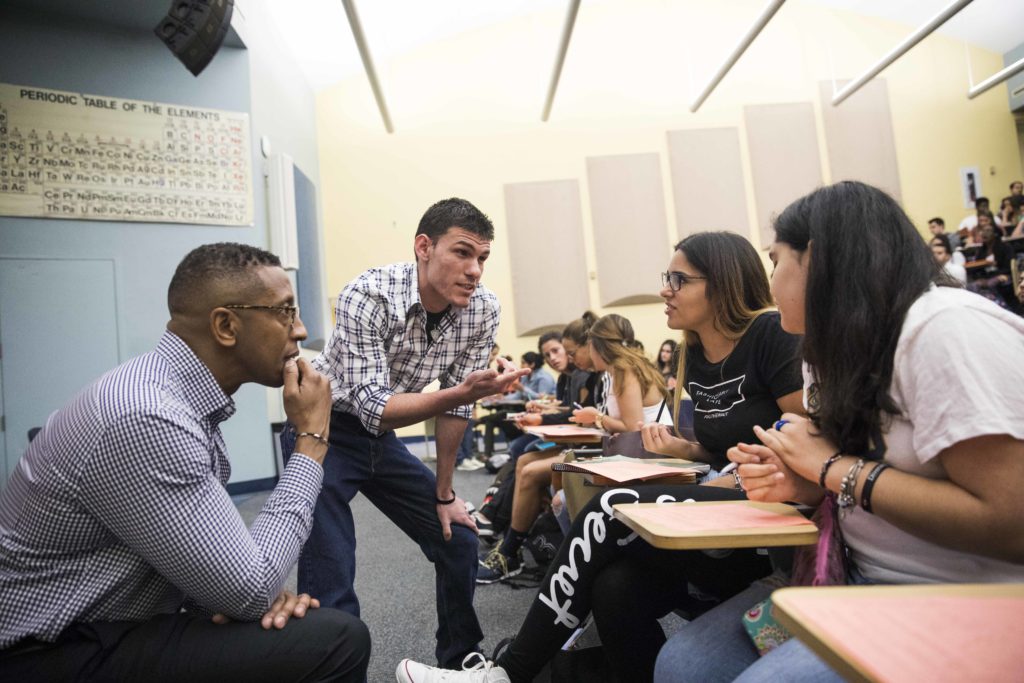
Expanding College Opportunity
Expanding College Opportunity
Since 1999, 20,000 low-income students have earned college and graduate degrees with the help of the Bill & Melinda Gates Foundation.
Education has transformative potential that we as a country are still only beginning to unlock. That’s the belief that drives me each day as president of the United States Program at the Bill & Melinda Gates Foundation. I’ve had the privilege of seeing time and again how access to a great education allows students to rise out of poverty, achieve financial stability, and succeed in life.
It was a desire to ensure education lived up to its potential as the bridge to opportunity that drove the foundation to make education the primary focus of its work here in the United States. In fact, one of the foundation’s earliest commitments—the Gates Millennium Scholars Program—was established back in 1999 with the long-term goal of providing 20,000 low-income, diverse students with the opportunity to pursue a fully-funded undergraduate and graduate education. Last year, the program achieved that audacious goal and more than 80 percent of scholars earned a degree—a fact we were proud to celebrate.
But sometimes the best way to describe the impact of the Gates Millennium Scholars Program is to share not just the big picture numbers, but also individual stories. When I had the chance to meet with scholar Monica Lopez, she shared with me that she grew up doing well in school and dreaming of going to college. But she never knew if she and her family would be able to afford it. Learning of the Gates Millennium Scholars Program, she submitted an application and her strong academic record, active community involvement, and passion for her future earned her a spot.
Monica was accepted into the University of Texas at Austin, but then life intervened when both of her parents were diagnosed with cancer. But where most families would have had to figure out how to balance the expense of managing two illnesses with the cost of higher education, Monica’s scholarship allowed her to stay in school. She would go on not only to graduate, but to be her class valedictorian. Sadly, her parents passed away before they could see her walk at graduation, but I know how proud they would have been not only of her academic achievements at UT—and of her subsequent law degree from Thurgood Marshall School of Law in Houston, but also of her heavy involvement as an advocacy volunteer with the American Cancer Society.

Gates Millennium Scholar Monica Lopez. Photo courtesy of Monica Lopez
Monica is among many Gates Millennium Scholars who used the opportunities that higher education opened up to improve not only their own lives, but those of countless others. I’ll share just a few examples. Dr. Walt Basio has been recognized by the National Science Foundation for his research on epilepsy. Steven Arounsack was nationally recognized for his use of digital media in ethnographic research. Dr. Christina Gilchrist is the vice president for operations at Omega medical research. I could go on and on. I even count several Gates Millennium Scholars among my colleagues at the foundation.
While the program reached its goal and we could not be prouder of the incredible accomplishments that education made possible for these high-achieving African American, American Indian / Alaska Native, Asian Pacific Islander, and Hispanic students, the foundation’s commitment to scholarships continues. We’re looking forward to finding new ways to elevate high-achieving students from minority backgrounds with high academic potential, low socioeconomic status, and demonstrated leadership ability.
During the nearly two decades since the program was founded, the importance of education beyond high school has only increased. More than ever before, it’s clear that a high school education is no longer enough to secure a well-paying job. Students need education beyond high school to move into the middle class—and our economy needs more workers with a higher education credential for our country to remain competitive. The United States is currently on track to produce at least 11 million fewer career-relevant certificates and degrees than our economy will require by 2025.

Allan Golston (left), President, U.S. Programs, Bill & Melinda Gates Foundation meets with students at Florida International University. Credit: Christopher Farber
At the same time, we have also seen shifts in who attends higher education and what higher education looks like. Today’s college students are no longer 18-to-22-year-olds enrolling full-time directly out of high school and living on campus. Instead, they tend to be older, work full- or part-time, and may have a partner or children. They also are often the first in their family to go to college and are increasingly diverse. From 1990 to today, the percentage of non-white students has more than doubled—from 20 percent to 42 percent.
The definition of higher education keeps expanding, too—far beyond the confines of traditional two- and four-year degrees and in-person lectures. Today’s technical certifications, online and blended learning platforms, vocational courses, evening and weekend classes, and competency-based education programs are as varied as the students they serve and the careers they seek.
At the foundation, our commitment to quality education—from early education to K12 to higher education—has never been stronger. One of the great challenges is that while education is sometimes thought of as “the great equalizer,” the reality is very different. In fact, our current education system often reinforces inequity rather than reduces it. For example, a leading indicator of whether a student will earn a college degree is not intelligence, test scores, or hard work: it’s family income. Only one in 10 of the lowest-income students will complete a certificate or degree by age 24. What’s more, even among students who start higher education, about half do not finish. The percentage is even higher for students from low-income backgrounds and students of color. The Gates Millennium Scholars Program stands testament to what is made possible—both for individuals and for society—when more students have the opportunity to pursue education beyond high school.
While education is sometimes thought of as “the great equalizer,” the reality is very different. In fact, our current education system often reinforces inequity rather than reduces it.
As we look to increase the number of students from low-income backgrounds, students of color, and first-generation college-goers who finish a high education credential, I’m encouraged by a number of breakthroughs in recent years. For example, a program in Florida was created in response to the challenges students were experiencing when transferring. One in three higher ed students attends more than one institution—yet the difficulty of transferring credits often leads to wasted time and money, and increases the chances of not finishing. “DirectConnect to UCF” empowers students to move seamlessly from a two-year to a four-year program—and they can even take courses toward a four-year degree while still at a two-year college.
Another exciting innovation uses technology to let educators know when a student’s class attendance and assignment grades place them in danger of dropping—or failing—out. Whatcom College is one of many institutions that use technology-enabled advising to help students make more informed decisions about what courses to take and that provide early alerts to students and educators when challenges arise. Technology is helping students stay on track toward graduation and giving educators new tools to support students along the way.
Whether it’s working with institutions that are leading the way in increasing student success or with partners who are designing new technologies that expand what’s possible, the goal remains the same. We’re united by a passion for ensuring that every student—regardless of gender, income, race, or zip code—has the opportunity and the support to excel in education and in life.
Allan Golston is president of the United States Program at the Bill & Melinda Gates Foundation.
Project
Gates Millennium Scholars Program
Philanthropy
Bill & Melinda Gates Foundation


